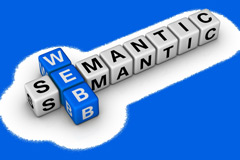SEMIC action: what we have done in last months, apart from SEMIC 2018 conference
Fidel Santiago and Susanne Wigard, Project Managers of the SEMIC action in the Interoperability Unit, Directorate-General for Informatics, European Commission
The SEMIC action has been quite busy during the last few months. Besides organising SEMIC 2018 on Linked Digital Public Administrations, we have continued the maintenance of existing Core Vocabularies and DCAT-AP. This involved collecting change requests, interacting with stakeholders, fixing bugs, etc. Eleven change requests resulted in the publication of 2 new versions and 6 new representations in JSON-LD. Besides managing change requests from stakeholders, the ISA² Programme proactively analysed how DCAT-AP is used on the European Data Portal, which harvests data from portals across EU Member States.
Also, we have developed a draft (Core) Public Event Vocabulary to be tested by stakeholders around the EU. For the first time, the working group focused strongly on the use case of microdata, i.e. annotating public event information online to increase visibility in search engines. Therefore, an RDF representation of the draft Core Vocabulary was created that is based on Google’s schema.org.
Continuing with the great emphasis the action places on the generation of tangible outcomes, we have run several pilots to showcase the value of semantic interoperability and linked open data:
- The Financial Transparency System (FTS) pilot about publishing FTS data as linked open data. It is a great example of the pioneering work of the ISA² Programme in the field of linked open data. The pilot runs through all the steps in the creation of a LOD dataset: from developing a conceptual data model, over creating a vocabulary and transforming the data, to demoing the features of linked data online. Moreover, for the first time, two fiscal transparency datasets, i.e. the EU Budget and the FTS data, were linked, allowing for new views and insight into the data. More about the FTS pilot here.
- Another interesting pilot has involved the National Interoperability Framework Observatory (NIFO), which we helped in creating machine-readable representations of the NIFO factsheets. The goal is to publish the factsheet documents that are currently available on Joinup under the NIFO collection as Linked Open Data, so that it can be enriched with data from other sources.
Finally, the action has published a number of interesting studies in the field of semantic interoperability:
- A Big Data Interoperability Analysis, identifying the interoperability challenges to be tackled when integrating data for analytical purposes and the role of technical and data standards to improve interoperability. The study provides users with a set of good practices to deal with challenges affecting different dimensions of big data, with a focus on variety and veracity; and
- A Research Data Analysis, which assesses whether DCAT-AP can be used as the standard for exchanging metadata about research datasets. The study shows that the DCAT-AP can act as a common language between research metadata models, and can thus help the exchange of metadata between research data catalogues.
And what is next?
In the following months, we will keep working on the maintenance of our Core Vocabularies and DCAT-AP, and we will further collaborate with our NIFO colleagues to get the NIFO eGovernment factsheets as Linked Open Data. Also, the action will produce several documents with the aim of supporting our community in our common semantic interoperability endeavours:
- Elaborate on the value proposition of DCAT-AP, and probably other SEMIC deliverables, to better help our more technical community members with the internal promotion of semantic interoperability solutions.
- Further study the tool chains for the development of vocabularies used in the Member States and share that knowledge with the whole community.
- Explore how organisations can leverage Core Vocabularies (in particular Core Person) to comply with the right to data portability granted by the new General Data Protection Regulation.


